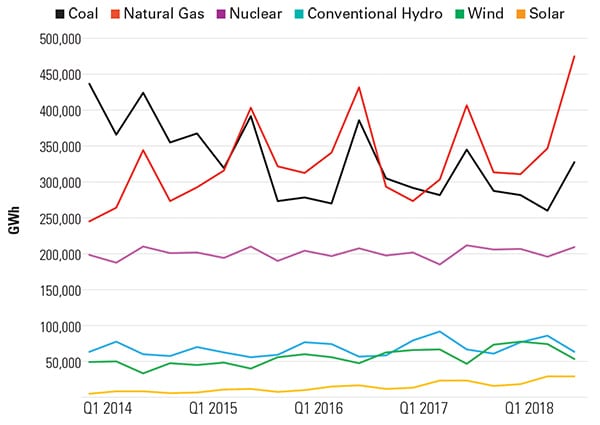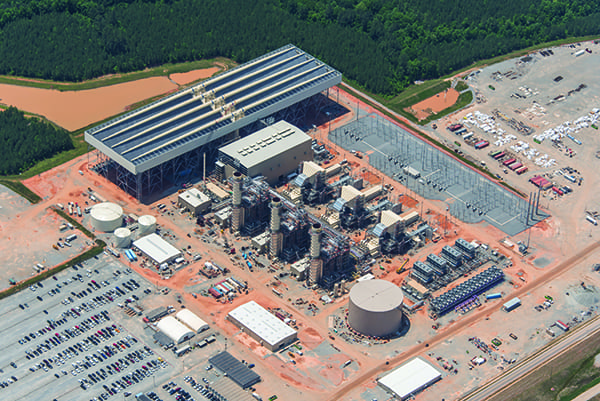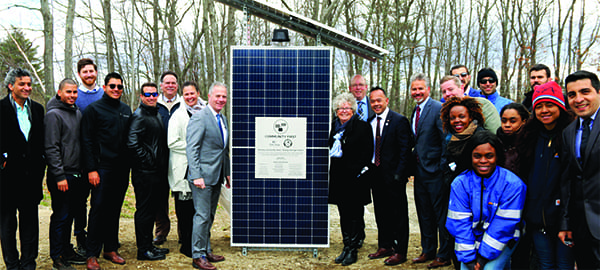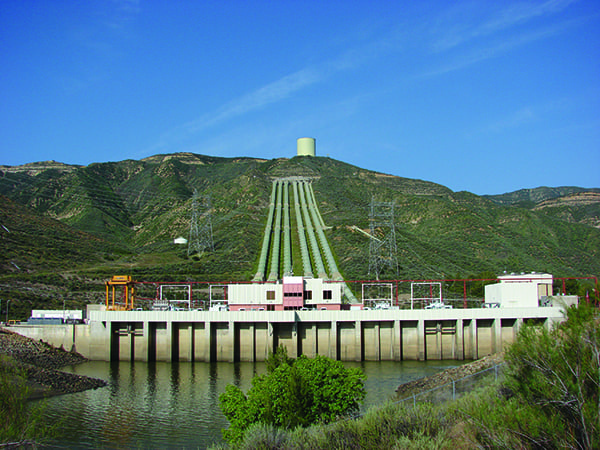Natural Gas and Renewable Energy to Continue Leading the Market
The more things change, the more they stay the same-at least that's how it's been for the U.S. power industry in recent years. Coal-fired generation has been decreasing while natural gas-fired generation and renewable energy continue to gain market share (Figure 1). The news is not likely to surprise anyone who has been following electricity sector trends, but there are some potentially interesting developments that could give folks in the coal sector a little hope in the near-term.
 |
| 1. This chart shows quarterly net generation in the U.S. from the first quarter of 2014 through the third quarter of 2018. Summer peaks have consistently increased for gas-fired generation and decreased for coal over the timespan.Source: U.S. Energy Information Administration |
For example, the spot price for natural gas at the Henry Hub-a nexus of interconnections in Erath, Louisiana, which gas insiders consider a benchmark for the market due to the ready access to interstate and intrastate pipelines available at the location-spiked to more than $4.50 per MMBtu in early December, after having spent the majority of 2018 under $3. The price increase could lead to more coal-fired generation being dispatched this winter. Nonetheless, the price would have to increase quite a bit more-with the prospect that it could stay there for a while-before any new coal-fired or nuclear capacity additions would be contemplated in the U.S.
"Gas would need to be at least in the $7 or $8 per MMBtu range before coal and nuclear would even be considered to be economical," Britt Burt, vice president of research for the power industry with Industrial Info Resources (IIR), told POWER during an exclusive interview in December. "Our oil and gas experts tell me that we're looking at $3 to $4 natural gas for a very long time."
IIR is a global market intelligence company that provides clients with project and plant spending analysis and projections. "Any new capacity that we see being built is still going to be dominated by natural gas, as well as renewables-wind and solar, primarily," Burt said.
Coal is also under pressure around the world. Andreas Fornwald, partner and head of Ward Howell International's Energy Practice, told POWER that coal is a huge political issue in Germany. The country's rising CO2 emissions in recent years, as coal power plants have been called upon to compensate for the intermittency of renewables, is the main issue there.
Natural Gas Turbine Market ChangesYet, even as natural gas-fired generation grows and new plants come online, original equipment manufacturers (OEMs) are finding the gas turbine market to be quite challenging. GE-long a leader in the gas turbine business-has been struggling since its $10.6 billion acquisition of Alstom's Power and Grid business closed in late 2015.
In November, GE announced the reorganization of its Power division into two businesses, forming GE Gas Power, comprised of Gas Power Systems and Power Services, and GE Power Portfolio, comprised of the Steam, Grid Solutions, Nuclear, and Power Conversion businesses. Scott Strazik was named CEO of GE Gas Power, while Russell Stokes became CEO of GE Power Portfolio. Strazik sat down with POWER in December at the POWER-GEN International trade show to talk about the changes. He acknowledged a few challenges, but seemed optimistic about the company's future.
"This is a complicated market right now, for sure-and we've experienced that-but we're coming away from this period of time, both in the market and with gas power, confident on where we're going, confident in how we're going to service our customers and how we're going to innovate for them for tomorrow," Strazik said.
Strazik agreed with other experts that renewable energy will continue to grow "exponentially," but he likewise felt natural gas generation has a bright future. "Gas has a lot going for it," he said, pointing to the power density it offers. In addition to North America, Strazik said Taiwan offers a great opportunity for gas power systems, as that country replaces its nuclear capacity. With little available land for solar and wind installations, gas-fired facilities make sense due to the small plant footprint. Likewise, he cited Bangladesh as an opportunity, as well as Brazil and parts of Europe for various other reasons.
As GE has faltered in recent years, Mitsubishi Hitachi Power Systems (MHPS) has established its position at the top of the gas turbine sector. In an exclusive interview with POWER, Paul Browning, CEO of MHPS Americas, noted the changes in the OEM landscape.
"This is the first time in the history of our industry that Mitsubishi's sitting at POWER-GEN in December with No. 1 market share year-to-date globally for all gas turbine sizes," Browning said. "That's something we're pretty proud of."
Browning said MHPS planted its flag in advanced-class gas turbines 20 years ago. A recent industry shift from F-Class gas turbines to advanced-class units (Figure 2) has given the company a big boost.
 |
| 2. The first unit of Dominion Energy's 1,558-MW Greensville County Power Station located in Emporia, Virginia, was powered up in July 2018. Fluor Corp. was responsible for engineering, procurement, construction, and commissioning of the facility, which has three Mitsubishi Hitachi Power Systems M501J gas turbines.Courtesy: Fluor Corp. |
"The industry has really embraced our J Series gas turbine. We now have 28 of them in commercial operation. We have 61 ordered. We have 82 that have been selected by customers, not yet ordered because the project doesn't get to financial close, but it's really been embraced," said Browning. "We have the largest installed fleet in the world of any OEM in the advanced-class turbines."
Eye on RenewablesThe movement toward renewable generation has not been lost on MHPS either. The company launched a new business in 2018 called Power and Energy Solutions. "This is a business that's focused on renewable energy, battery storage, and artificial intelligence," said Browning.
"We're already chasing projects for energy storage, and we are in the process of beginning to develop [photovoltaic] solar and wind power projects in North America," Browning said. "It's part of that change-in-power theme. We're trying to make sure that as things change, we're positioned to take advantage of the growth trends in the industry."
The growth in renewable energy is not simply a U.S. phenomenon either. According to Smith Brothers Contracting Ltd.-a UK-based high-voltage power engineering contractor-the falling price of equipment, co-location of technologies, and investments by wind farms to upgrade from nominal power outputs to a greater, more-efficient generator are all helping the renewables sector flourish.
Historically, one of the main barriers to the adoption of renewable technology was the upfront setup cost of clean energy versus that of fossil fuels. However, in recent years the initial outlay associated with utility-scale wind, solar, and battery storage facilities has declined significantly.
"The reduction in government subsidies has made the industry rethink how to encourage the growth of renewable technologies and sector implementation in order to generate the required income for developers to take the step into an unsubsidized future," Dave Ogden, director at Smith Brothers, told POWER. "By removing government-mandated support and introducing cross-subsidization of subsidy-free schemes-where new projects co-locate with those already connected to the grid or battery storage-there's a much clearer path towards achieving grid parity."
While incentives still exist for wind and solar in the U.S., the subsidies are winding down. IIR's Burt pointed out that production tax credits for wind will expire at the end of 2019, and the solar tax credit, which he said is currently a flat 30%, will decrease to 10% in 2020.
"The cost of the technology has certainly come down for wind, so it makes it a little bit more competitive with natural gas, but we haven't seen a wind project have to go out and get financing minus the subsidies, so there's a little bit of uncertainty there," Burt said.
With the current political divide in the U.S. and 2020 being an election year, it's unlikely that bipartisan legislation will be developed to extend or create new renewable energy tax credits before the wind incentive expires. Historically, that has resulted in a significant decline in development. Burt suggested it would also open a window of opportunity for more natural gas plants to be built.
Nonetheless, there are other factors pushing clean-energy projects forward. Some states, such as California, Hawaii, Massachusetts (Figure 3), and New York, have very aggressive renewable portfolio standards, which are driving installations. Ogden said the cost for equipment, such as photovoltaic panels, will "inevitably continue" to decrease, which also encourages growth.
 |
| 3. Origis Energy USA and Sterling Municipal Light Department celebrated the completion of Massachusetts' first community solar-plus-storage installation in April 2018. The project couples a 1-MW rooftop solar installation with a 1-MW/2-MWh energy storage system to deliver dispatchable clean energy to ratepayers in the Town of Sterling. Construction began in January and was completed by the end of March.Courtesy: Origis Energy |
While the U.S. seems to have a ceaseless supply of natural gas, the world market is a bit less fortunate, which is why U.S. producers see liquefied natural gas (LNG) as such a great opportunity. In December, the U.S. Energy Information Administration reported that China-led primarily by growth in LNG imports-overtook Japan as the world's largest importer of natural gas, exceeding 12 billion cubic feet per day in August and September. Through the first nine months of 2018, China's total gas imports grew 34% compared to the same period a year earlier. Its consumption has been stimulated by government policies promoting coal-to-natural gas switching in an effort to reduce air pollution and meet emissions targets.
MHPS aims to take advantage of that trend as well. "North America is going to become a big exporter of liquefied natural gas, so we have a turbine called the H-100, which we're combining with a Mitsubishi compressor to make a liquefaction train," said Browning.
"Our view of the future in North America, and also around the world, is that we're going to see a combination of natural gas and renewables displacing more carbon-intensive power sources, principally coal, in some parts of the world oil. So, this trend toward decarbonization we think is a very certain trajectory for our industry. But it's going to be this combination of gas and renewables," Browning said. "When gas displaces coal-fired power generation, it's about a 65% reduction in carbon intensity. Of course, renewables is 100%-essentially 100% reduction. A 50-50 combination of gas and renewables is about an 85% reduction in carbon intensity. So, we think there's a lot of progress the world can make by that combination of gas and renewables."
According to Burt, the hotbeds for gas development in the U.S. have been in the Mid-Atlantic region, where owners can take advantage of inexpensive and abundant Marcellus shale gas, as well as in the Texas and Louisiana Gulf Coast regions.
Opportunities for Energy StorageEnergy storage in all of its forms could be the next great frontier. While lithium-ion (Li-ion) batteries are probably the most-talked-about form of storage, pumped hydro (Figure 4) and new hydrogen storage schemes are also finding plenty of advocates.
 |
| 4. Pumped-storage hydro is not a new concept. The Castaic facility, shown here, is a seven-unit hydroelectric plant located about 22 miles north of Los Angeles, California. It was commissioned in the early 1970s.Courtesy: Sirbatch / Creative Commons |
"There have been some measures taken to kind of streamline the permitting cycle for pumped-storage facilities, so longer term, I think we have some potential to see some hydro development take place," Burt said.
As previously mentioned, MHPS's new business has a battery storage element to it. But Browning said the company doesn't expect to start manufacturing Li-ion batteries; it sees itself being more of a "technology integrator" and "project developer." Still, what seemed to excite Browning more was the prospect for hydrogen combustion in MHPS gas turbines.
"We have the technology today to burn about 30% hydrogen in any one of our products, including the JAC," he said. "We have a project in the Netherlands where we're working on burning 100% hydrogen."
The concept could be particularly useful in places like California, where, because of high renewable energy penetration, electricity prices can be very low or even negative during large parts of the day. Under such circumstances, the electricity could be used to produce hydrogen through electrolysis, with the hydrogen then stored in tanks, or even, to some degree, in the natural gas distribution system. When solar production dies off in the evening and electricity prices return to a more-favorable level, the hydrogen could be burned in a combustion turbine, generating carbon-free electricity. There is still more work to be done to scale-up the technology and bring costs down, but Browning didn't seem to think that was a deal-breaker. a-
-Aaron Larsonis POWER's executive editor.
The post Natural Gas and Renewable Energy to Continue Leading the Market appeared first on POWER Magazine.